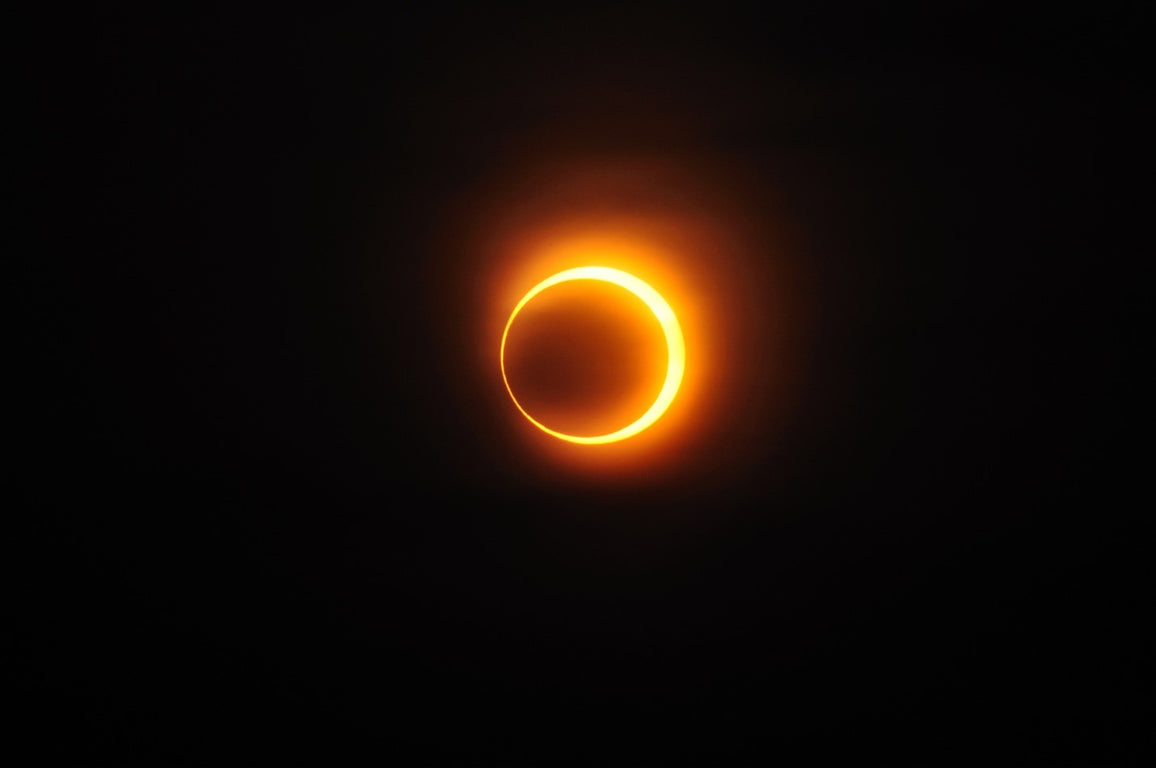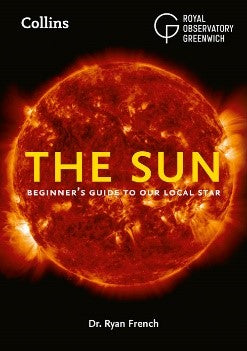This Saturday (14th October), an annular or ‘ring of fire’ solar eclipse will be visible across North and South America. Solar eclipses occur as the Moon passes between the Earth and the Sun, occurring 1-2 times a year due to the imperfect alignment between Sun-Earth-Moon orbits. When the Sun-Moon-Earth alignment does take place, there are three possible views from Earth.
1) Partial solar eclipse: The Sun is partially blocked by the Moon, giving a view of the crescent Sun. A partial solar eclipse also precedes and succeeds other types of eclipses, and can also be observed over a much larger geographical region.
2) Total solar eclipse: This occurs when the Moon fully blocks the Sun, preventing 100% of sunlight from reaching the ground. This period of full sunlight-blockage, which only happens for a few minutes for a very narrow region of the Earth, is called totality. During totality, the absence of sunlight in the sky allows the naked human eye to observe the extended atmosphere of the Sun, known as the corona.
3) Annular solar eclipse: This is special type of partial solar eclipse, occurring when the Moon is at its smallest apparent size in the sky. The Moon’s orbit around the Earth is not perfectly circular, and so its angular size changes by about 20%. If the Moon passes in front of the Sun whilst at its greatest distance from Earth, is it not large enough to fully block the Sun. This creates a ring of bright sunlight around the Sun, aptly also known as a ‘ring-of-fire’ eclipse.
For the most part, solar eclipses must be viewed with safe viewing equipment. This can either be with dedicated solar viewing glasses, or by creating simple pinhole cameras to project the shape of the Sun safely. During a total solar eclipse, the few minutes of totality (not seen from everywhere) can be viewed with just the naked eye.
This Saturday will see an annular eclipse across the United States, through states including Oregon, Nevada, New Mexico, Utah and Texas, before passing through Mexico, Belize, Honduras, Nicaragua, Costa Rica, Panama, Colombia and Brazil. Almost every other location across the Americas will see a partial solar eclipse of some kind. Precise maps can be found online at timeanddate.com/eclipse.
The next total solar eclipse, where the Moon fully obscures the Sun, will take place on the 8th April, also in North America. For British eclipse chasers, the outlook is less great – for the next solar eclipse on British soil is not until the 23rd September 2090. It’s a Saturday, so be sure to put it in your calendars. For those willing to travel though, back-to-back total solar eclipses will be visible from parts of Spain in 2026 and 2027.
To learn more about eclipses, and other exciting ways to observe the Sun, The Sun: beginner’s guide to our local star, is out now.

Annular solar eclipse (Image credit: Wikipedia Commons)

Evolution of a partial to total solar eclipse (Image credit: NASA/Aubrey Gemignani)
About the author
This blog was written by Dr. Ryan French, solar physicist and author of The Sun: Beginner’s Guide to Our Local Star. This fascinating guide explores history, science and modern observations to uncover the mysteries of the Sun and teaches you how you can observe it safely from your own back garden.

